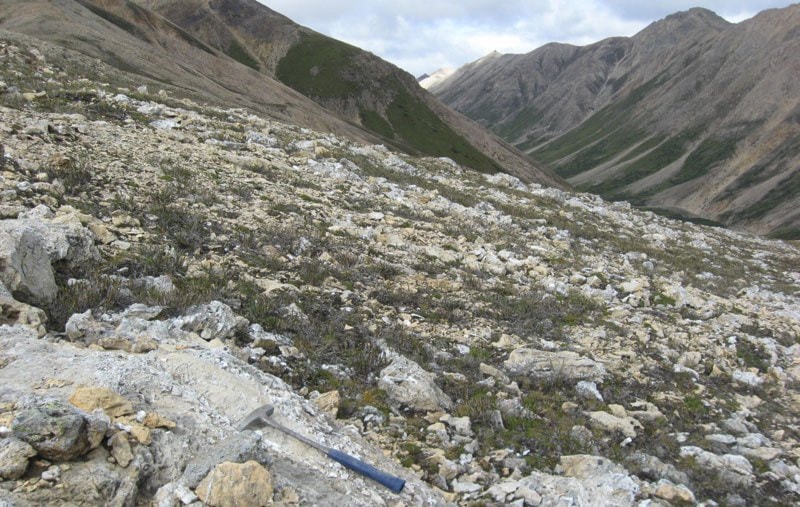The Yukon government’s new plan for the Peel watershed is not friendly enough to development, says the president of a company with claims in the area.
Tarsis Resources Ltd.‘s Goz Creek zinc deposit now finds itself in the middle of a protected area.
Marc Blythe said the government should reduce protections around the company’s claims or pay for the expropriation of the resource.
“Even though the government has grandfathered our claims, I think it would be quite difficult for us to get community licence to move that project forward,” said Blythe.
“I think Canadians generally, when they see something designated as protected area, they don’t expect that there’s potentially a donut going to be carved in that by a mine.”
Being surrounded by protected areas would make it a lot harder to develop the project, he said.
“We’d like to see them either put a buffer zone around our project, so that there’s a clear demarcation between us and any protected area, and that would also allow us the potential to expand for infrastructure and to make sure that we can capture all the mineralization that’s there.
“Or, alternatively, we’d like them to expropriate it and compensate us for that. And we think that either option is reasonable.”
But the future of the government’s plan for the Peel is uncertain for an unrelated reason.
First Nations with territory in the area have sued the Yukon government, sayings its plan does not live up to their agreements.
They would like to see the plan recommended by the Peel planning commission implemented instead.
Under that plan, Tarsis’s Goz Creek claims would be surrounded by an even higher level of protection, as no roads would be permitted to access the mine site.
Blyther attended the Vancouver news conference where the chiefs of the Tr’ondek Hwech’in and the First Nation of Nacho Nyak Dun announced the lawsuit, he said.
“I do think that where a government makes an agreement with a First Nation they should definitely abide by the terms and conditions of that agreement. Ultimately the court will decide if they have or haven’t.”
The Goz Creek claims date back to 1973, said Blythe. They are located in the southeast corner of the watershed.
“This wasn’t something that was just dreamed up to try and get compensation or anything like that. This is a long-standing project that’s been around, and is well known and documented.”
Beneath the claims there is a defined, high-grade zinc resource, he said. It’s currently fairly small but the company believes it could be much bigger.
“Obviously it’s a remote project as well. We recognize that. That’s part of the reason it hasn’t been developed or mined completely by now.”
A sustained upswing in zinc prices could make a mine economically viable on Goz Creek, said Blythe.
“One of the things that really disappoints me about where the whole discussion on the Peel has gone is that there’s been this whole sense put forward by environmental interests that mining can’t co-exist peacefully with other activities in the Peel. I think that’s just wrong. I think that mining can definitely co-exist in there with other interests. We’re talking about an area the size of Ireland. It’s huge.”
It’s a myth that the Peel is untouched wilderness, he said. In fact, there have been extensive exploration campaigns in the area.
He’s seen one figure of $150 million spent on exploration in total, he said.
“For an area to have $150 million spent on mineral exploration on it and still be called pristine, I think that’s probably a testament to the quality of the work that’s been done by companies in that area.”
Contact Jacqueline Ronson at
jronson@yukon-news.com
